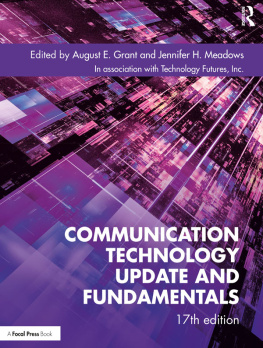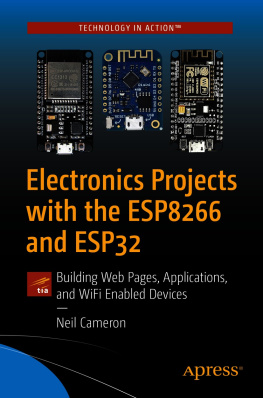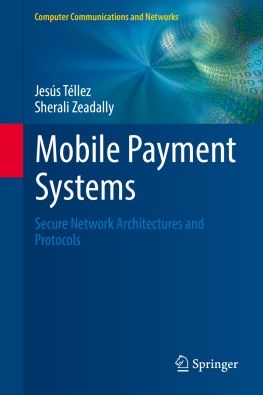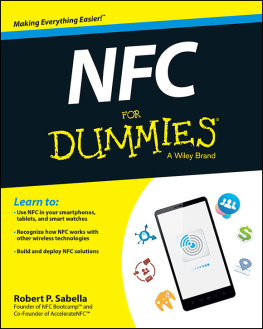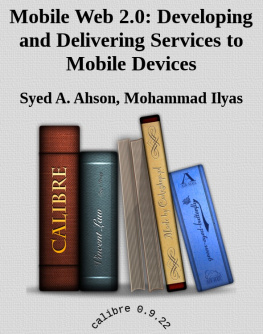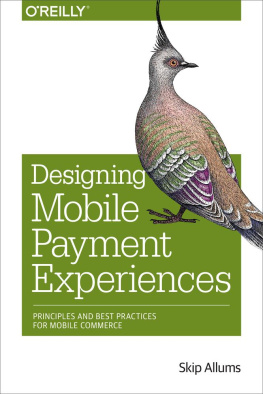My appreciation goes to my family who supports me in learning and living my life fully, and to my friends who believe in me and are always there for me.
David Williams and Julie Chang Schulman are my editors. I thank them for their patience and wisdom. Additional thanks to David Schulman, Linda Schulman, Jean Marie Hung, Karl Weaver, Ranjan Kumar Naidu, and Tung-Yuen Lau for their review and feedback.
Poken, ScholarChip, TapWise, Taganize and Tapit for providing information on tag management platforms.
About This Book
Albert Einstein once said, If you cant explain it simply, you dont understand it well enough. Since I understand Near Field Communication (NFC) well, my intention in writing this book is to explain NFC technology in such a way that my readers can take advantage of its exciting potential.
NFC is an innovative technology that has yet to be widely adopted. However, when consumers and businesses fully understand and adopt this technology, NFC will transform not only the consumer experience, but also our everyday lives. For example, 3800 athletes from 204 countries were able to follow events, engage in activities, retrieve and store information, and get to know other participants in the Young Olympic Games at Nanjing, China in August 2014 using Yogger, an NFC-enabled wearable device.
New business opportunity will reward early adopters for their vision and foresight. The potential for transformation brought by NFC technology inspires me. Therefore, I am updating my readers with the latest developments.
Updates:
This is the second edition of Everyday NFC. It includes new information on tag management, mobile payment, Host Card Emulation (HCE), use cases and the Apple Pay mobile wallet available via iPhone6.
Book Structure:
This book is organized into five chapters:
A technology overview with examples and summaries.
Examples of current use cases that demonstrate recent NFC applications in mobile payment, banking, gaming, transit, health care and many more.
Brief summaries that describe the use of NFC phones/tags/wallet and a technology overview of the two communication modes, three operating modes, NFC secure transactions and HCE.
Summary of the NFC ecosystem and various industry standard groups.
Summary of the value of NFC and a comparison with other wireless technologies.
Who Should Read This Book?
This book is written for people who are interested in learning about NFC and want to explore the possibility of this technology. This includes application (app) developers, business executives, entrepreneurs, innovators and consumers who are eager to adopt new technology.
It is also useful for executives who are responsible for making decisions about NFC projects.
For a brief general overview of the technology, see the introduction section of each chapter.
Supplemental Reading
Go to everydaynfc.com to see the most recent news and discussions.
Go to EverydayNFC in Paper.li to read the daily news about the NFC technology.
Chapter 1: What is NFC?
Introduction
Near Field Communication (NFC) is a contactless technology using Radio Frequency, eliminating the need for physical contact. When NFC is integrated into wireless devices, it serves as another option for wireless connectivity; other similar technologies are WIFI and Bluetooth.
With NFC, mobile devices can easily connect within four centimeters of each other to retrieve and exchange data (Figure 1). It operates at 13.56 MHz and transfers data at up to 424 Kbit/second.

Figure 1: Two NFC-enabled phones exchange data
At the same time, NFC is not just a connectivity technology; it is also an enabling technology. For example, NFC can enable mobile payment and secure access to buildings or public transportation.
NFC can also initiate many automated processes with NFC tags (Figure 2).

Figure 2: An NFC-enabled phone reads data from an NFC tag
The following are two examples of NFC in action:
- ORCA Cards
Have you ever ridden a bus in Seattle? In the greater Seattle area, the ORCA card system was launched in 2009 to consolidate payment options for the different branches of mass transit. Riders who carry an ORCA card can get on a King County Metro or Sound Transit bus, Light Rail train or even a ferry without needing cash for the fare. When the ORCA card is swiped across a card reader, the fare is deducted from the cards account value (Figure 3), called an e-purse (King County, n.d.).

Figure 3: An ORCA reader reads an ORCA card
Technical summary:
- The ORCA card is a smart card with NFC technology.
- A microchip named MIFARE DESfire is embedded inside the ORCA card (Raschke, 2011).
- Information is stored in the microchip, which has a secured microcontroller and internal memory.
- An antenna is embedded in the ORCA card to enable tracking of the card and data transmission.
- When an ORCA card is placed within 4 cm of the card reader, the card reader transfers energy to the microchip in the ORCA card.
- Wireless communication is established between the ORCA card and the card reader.
- The data transfer is completed.
- The ORCA payment process is completed.
- Assa Abloys Digital Key Service
When a guest checks in at Hotel Porta Fira Santos in France, the service provider (Assa Abloy) is able to transfer room key information to a SIM card in any NFC-enabled phone (Figure 4).
The guest can then access the hotel room by tapping their mobile phone to the lock of the room. This example was demonstrated at the GSMA Mobile World Congress (ABLOY, 2013).
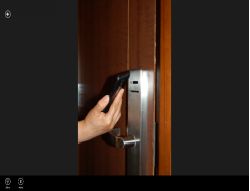
Figure 4: An NFC phone unlocks a door
Technical summary:
- A guest checks in at the hotel.
- The hotel room number is sent to a back-end platform (Assa Abloy) with the guests information.
- The platform transfers the hotel room number and key over the air to a smart card residing in the quests mobile phone.
- When the mobile phone is placed within 4 cm of the lock,


